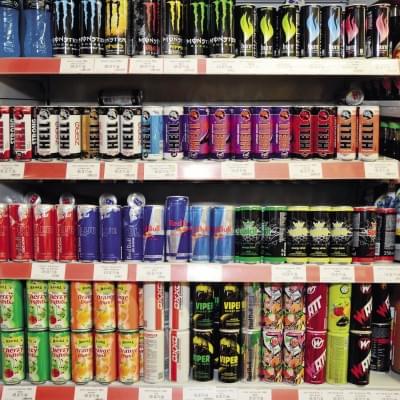They not only give energy, but great flavour experience too
Since the easing of the public health product tax (NETA) burden in 2013 the energy drinks market has been growing with dynamics of former years. The NETA has also cleansed the market, stimulated innovation and motivated manufacturers to get to know buyers better. For instance it became clear that it is counterproductive to reduce caffeine content and that the new generations of consumers aren’t as keen on the tutti frutti flavour as old ones. According to Tamás Jenei, director of commerce with HELL ENERGY Magyarország Kft., a new sales channel appeared on the scene: tobacco shops. These reach a special segment of consumers. As for product size, the 0.25 can retained their popularity but the sales of energy drink in 0.33-litre PET bottle are also on the rise. Tibor Pécskövi, managing director of Márka Soft Drink Kft. told our magazine that 1.5-litre products survived among soft drinks ‘pretending to be’ energy drinks. Márka products are successful among fruit-flavoured energy drinks. After the fruit and coke flavours the market now seems to be going in the direction of health. The market expansion of the last few years entailed losing the premium product character of energy drinks and decreasing average prices. Adrienn Horváth, marketing manager of WATT manufacturer BUSZESZ Zrt. told Trade magazine that in Hungary young people are the biggest energy drink buyers and they are very price-sensitive. Zoltán Jakab, head of retail at Red Bull Hungária Kft. informed us that demand for energy drinks is bigger than the average in small shops located in residential areas. Every year HELL appears in the market with new products. Last year both the summer and winter innovations proved to be very successful. HELL Multivitamin sported a new taste and new ingredients, aside from the fact that its vitamin content attracted consumers in the winter period, when the flu season was in full swing. In the company’s communication strategy in-store presence is given the biggest emphasis. BUSZESZ Zrt. broke yet another record in 2014: the company manufactured nearly 100 million cans of energy drink in the Óbuda factory. Domestic sales of their WATT brand augmented by 60 percent, in terms of both value and volume, in comparison with 2013. The company reacted to the trend of flavour combinations quickly and their double-flavour products were selected by British petrol station chain BP for selling. It was in last spring that the first WATT double-flavour energy drink hit the shops and the success was overwhelming. A new pair of flavours will appear in shops this March – having a new design as well. The company will use new type of interactive POS promotions in its communication. Red Bull launched three new flavours last year. The brand has a stable group of buyers, products do especially well in hyper- and supermarkets and at petrol stations. Another new product will be introduced this year and the base product will receive a packaging related to the Red Bull Air Race. Coca-Cola’s BURN and MONSTER energy drinks performed very well last year. Péter Mucska, corporate affairs manager with Coca-Cola Hungary told Trade magazin that from the many countries where it is marketed BURN sales grew the fastest in Hungary. Both BURN and MONSTER will put new products on store shelves this year. What is new is that both brands’ future is now shaped by a single brand owner, MONSTER. The company believes that the best brand building tool for energy drinks is social media.
Related news
Coca-Cola, Grab strengthen partnership to engage hybrid shoppers in SEA
It includes regional campaigns across both online and offline channels.…
Read more >Coca-Cola Launches Initiative To Bolster Retailers In India
Coca-Cola India has announced a new support programme for small…
Read more >Best Global Brands: the most valuable brands in 2024
This autumn global brand consultancy Interbrand unveiled its Best Global…
Read more >Related news
Recognition of Consumer Protection Excellence: Honoring the Best of 2024
This year’s outstanding consumer protection officers and special award recipients…
Read more >KSH: industrial production decreased by 0.2 percent in October
In October, the volume of industrial production fell by 0.2…
Read more >Technological advancements and business travel
The latest research from International Workplace Group (IWG), the leading…
Read more >









